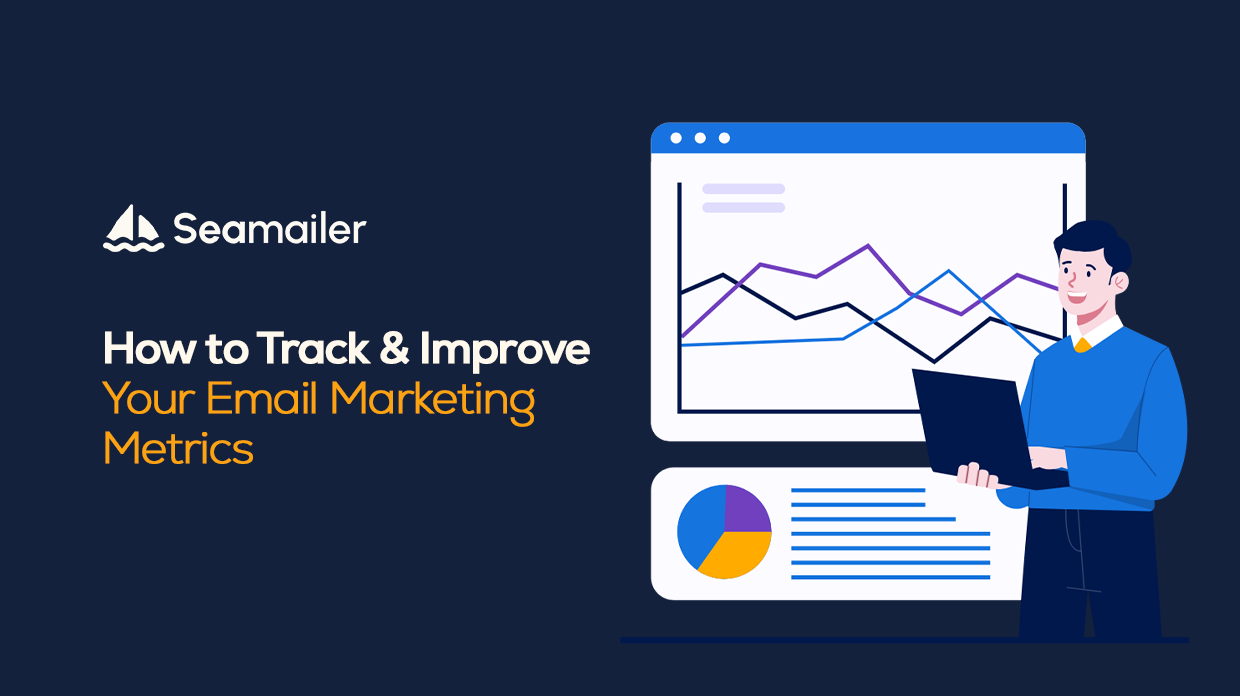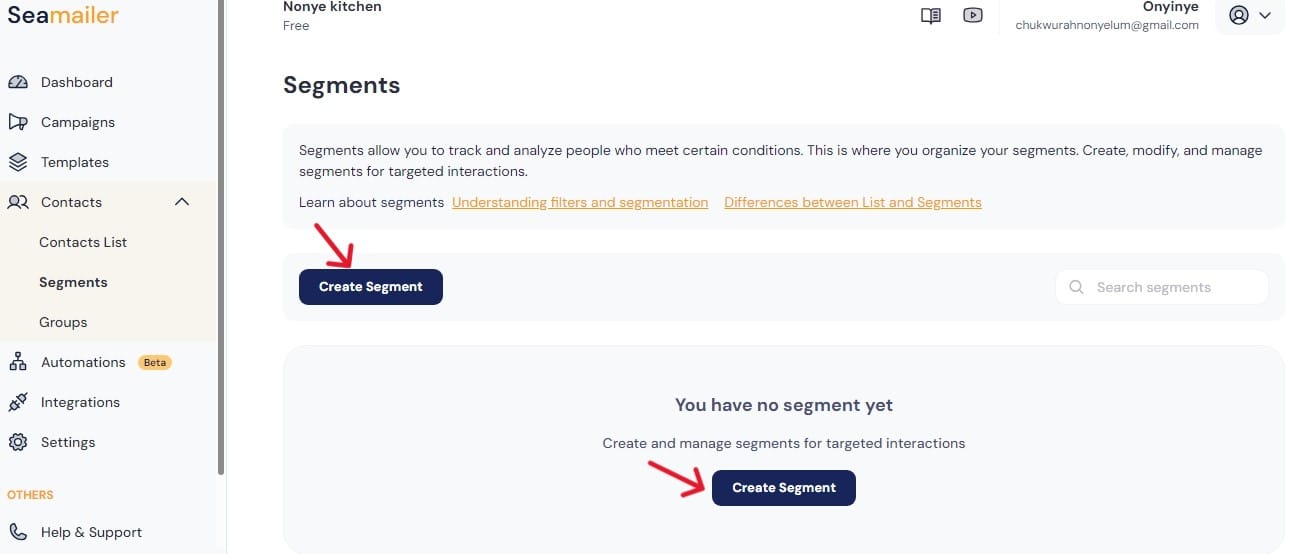How to Track & Improve Your Email Marketing Metrics

Stop guessing! Learn the essential metrics—Open Rate, CTR, Conversion, ROI—and get actionable, expert strategies to track, analyze, and dramatically improve your email marketing performance.
Ask any seasoned marketer what the closest thing to a silver bullet is in the digital world, and they’ll likely tell you it's email.
Despite the rise of social media, video, and AI-generated content, email marketing continues to deliver an unparalleled Return on Investment (ROI)—often cited as $36 for every $1 spent. But here’s the rub: Simply sending emails isn’t enough. To achieve that kind of ROI, you need to move beyond guesswork and become a metrics master.
If your emails aren't being opened, if your subscribers aren't clicking, or if your campaigns aren't generating sales, you’re not tracking the right things, or you're simply not using the data you have effectively.
This isn't about staring at a dashboard full of numbers. It's about translating those numbers into a strategic roadmap. This guide will take you step-by-step through the essential email marketing metrics you must track, how to interpret them, and the proven, real-world tactics to move those numbers from "meh" to magnificent.
Let's dive in.
Phase 1: Understanding the Core Email Marketing Metrics (The "What")
Before you can improve anything, you need a crystal-clear understanding of the fundamental health indicators of your email program. Think of these as the vital signs of your campaign.
1. Delivery Rate: Are They Even Getting There?
The Delivery Rate is your first and most critical metric. It’s the percentage of emails that successfully made it to the subscriber’s inbox or spam folder.
- How to Calculate: (Number of emails sent – Number of bounces) / Number of emails sent
- What It Tells You: This is a measure of your list quality and your sender reputation. A low delivery rate (anything consistently below 95%) indicates a serious problem, like an abundance of old, defunct email addresses or being flagged as spam.
- The Goal: Aim for 98%+.
2. Open Rate (OR): Did They See Your Subject Line?
The Open Rate is the percentage of recipients who opened your email. A crucial caveat: Due to recent privacy changes (like Apple's Mail Privacy Protection), this metric is less reliable for many users, as some opens are automatically counted. However, it remains valuable for relative comparison between your own campaigns.
- How to Calculate: Number of unique opens / (Number of emails sent – Number of bounces)
- What It Tells You: The effectiveness of your subject line and preheader text. High OR = great subject line. Low OR = boring or irrelevant subject line.
- The Goal: Industry average is typically 15-25%, but great segmentation can push this much higher.
3. Click-Through Rate (CTR): Did They Engage With Your Content?
The Click-Through Rate is the percentage of recipients who clicked on at least one link within your email. This is arguably more important than the Open Rate, as it indicates true engagement.
- How to Calculate: Number of unique clicks / (Number of emails sent – Number of bounces)
- What It Tells You: The quality and relevance of the email body content, the strength of your Call-to-Action (CTA), and the value proposition of the email itself.
- The Goal: Aim for 2.5% to 5% or higher, depending on your niche and email type.
4. Conversion Rate (CR): Did They Take the Desired Action?
This metric connects your email efforts directly to your business goals. The Conversion Rate is the percentage of recipients who completed a specific action after clicking the link—whether that’s a purchase, a form submission, a download, or a sign-up.
- How to Track: This requires proper UTM tracking on your links and setting up goals in an analytics platform (like Google Analytics). Your email platform (like Seamailer, which offers integrated analytics and conversion tracking) should make this process straightforward.
- What It Tells You: The effectiveness of the entire funnel—from the email content to the landing page experience.
- The Goal: Varies widely, but typically 1% to 5% for e-commerce.
5. Unsubscribe Rate: Are You Pushing People Away?
The Unsubscribe Rate is the percentage of recipients who opted out of your list after receiving the email.
- How to Calculate: Number of unsubscribes / (Number of emails sent – Number of bounces)
- What It Tells You: If your content is suddenly irrelevant, you're sending too frequently, or the segment is inappropriate for the message. A spike here is a massive warning sign.
- The Goal: Keep it below 0.5%.
Phase 2: Actionable Strategies to Improve Your Metrics (The "How")
Knowing the numbers is one thing; changing them is another. The key to improvement is a relentless focus on testing, segmentation, and personalization.
Tactic 1: Sharpening the Hook (Improving Open Rate)
Since your Open Rate hinges almost entirely on the subject line, this is where you need to focus your creative energy.
- The Curiosity Gap: Write a subject line that introduces a problem or a compelling idea but withholds the full answer. Example: "We Found a $100 Mistake in Your Last Report."
- Personalization & Localization: Use the subscriber's name, or reference their city or recent behavior. Research shows even simple personalization boosts OR.
- Urgency & Scarcity: Use phrases like "Ends Midnight," "Last Chance," or "Only 27 Seats Left" (use sparingly and genuinely).
- E-commerce Specific: The best-performing emails often skip the formal subject line and get right to the point: "Your Order is Confirmed" or "Your Coupon Code Inside."
- A/B Test Every Time: Never guess. Run split tests on your subject lines—even a difference of 0.2% can mean thousands of extra dollars over a year.
Tactic 2: Perfecting the Path (Boosting Click-Through Rate)
A high Open Rate is worthless without a click. To get the click, you must nail the content-to-CTA connection.
- Single, Clear Call-to-Action (CTA): The most effective marketing emails have one job. Don’t overwhelm the reader with a dozen options. Make the primary CTA prominent, usually a large, contrasting button.
- Value-Driven Copy: Immediately in the email, restate the value proposition that the subscriber saw in the subject line. If the subject promised a secret, the body must deliver that secret—and the click is the path to the full reveal.
- Visual Hierarchy: Use short paragraphs, clear headings, and white space. The reader should be able to skim the email in three seconds and know exactly what you want them to do and why.
- Button Placement: Place the primary CTA above the fold (visible before scrolling) and repeat it once at the bottom.
Tactic 3: The Power of Context (Mastering Segmentation)
This is the secret sauce of top-performing email programs. Segmentation is the process of breaking your master list into smaller, more specific groups based on shared characteristics. Sending the right message to the right person at the right time.

- Behavior-Based Segmentation:
- Engaged Subscribers: Those who opened or clicked in the last 30/60/90 days. Send them your best offers.
- Lapsed Subscribers: Those who haven't engaged in 6-12 months. Send a re-engagement campaign (a simple "We Miss You" or "Should We Say Goodbye?" email).
- Cart Abandoners: Trigger an automatic email 1-2 hours after they leave a product in their cart.
- Demographic/Preference Segmentation: Segment by location, job title, purchase history, or topics they have expressed interest in (e.g., "Men's Clothing" vs. "Women's Clothing").
- Tool Integration: Your email platform, like Seamailer, is invaluable here. Ensure it allows you to easily pull data from your CRM or e-commerce platform to create dynamic, automated segments. This allows you to scale personalization without manually managing thousands of lists.
Tactic 4: Cleaning House (Tackling Delivery & Unsubscribe Rates)
Low delivery and high unsubscribe rates are symptoms of a neglected list. A smaller, engaged list is always better than a huge, dead one.
- Regular List Cleansing: Every six months, identify and suppress (or attempt to re-engage) subscribers who haven't opened or clicked an email in a year. They are dragging down your metrics and harming your sender reputation.
- Double Opt-In (DOI): While it can slightly reduce initial list growth, DOI ensures every subscriber explicitly confirms their interest, drastically reducing hard bounces and spam complaints.
- Manage Frequency: Use an exit survey (accessible when someone unsubscribes) to ask why they are leaving. Often, the reason is "Too Many Emails." Offer a preference center allowing them to choose a less frequent mailing schedule (e.g., monthly digest instead of daily emails).
Phase 3: Measuring Success and ROI (The "Why")
Ultimately, metrics are just numbers until they are tied to revenue. The final, most crucial metric is Return on Investment (ROI).
The Email Marketing ROI Calculation
To truly understand the value of your email efforts, you need this formula:
ROI=Total Cost of Email Campaign/(Total Revenue from Email−Total Cost of Email Campaign)×100
- Total Revenue: This is the direct sales resulting from clicks within your emails (tracked via UTMs).
- Total Cost: This includes the subscription fees for your email platform (e.g., Seamailer), the time spent by your team writing and designing the emails, and any associated creative costs.
If your ROI calculation shows a positive number, you are making money. If it's $3600 for a $100 investment, you know exactly where to allocate more budget. This is the metric that gets the attention of the C-suite.
Tracking Beyond the Individual Email
Don't just look at one email's metrics. Track the following over a 3-month or 6-month period:
- Average Revenue Per Email (RPE): Total email revenue divided by the total number of emails sent. This tells you the value of each message.
- Subscriber Lifetime Value (SLV): How much revenue does an average subscriber generate over their entire time on your list? A high SLV justifies more budget for acquisition efforts.
Your Metrics Masterplan
Mastering email marketing metrics isn't about complexity; it's about consistency and focus.
- Define Your Goal: Before sending any email, decide its one and only goal: A click? A purchase? A download?
- Choose Your Metric: Align your primary metric to your goal (e.g., Conversion Rate for a purchase email, CTR for a blog promotion email).
- Use Your Tools: Leverage the analytics and segmentation power of your platform (like Seamailer). Don't let your data sit dormant.
- A/B Test and Iterate: Change one variable at a time (Subject Line, CTA button color, image) and track the result. Never stop testing.
- Clean Your List: Aggressively remove unengaged subscribers to protect your sender reputation and boost your key rates.
Email marketing is a relationship. The metrics are simply the stethoscope that helps you monitor that relationship’s health. By paying close attention to them and acting decisively on the insights, you won’t just improve your metrics—you’ll dramatically improve your bottom line.

